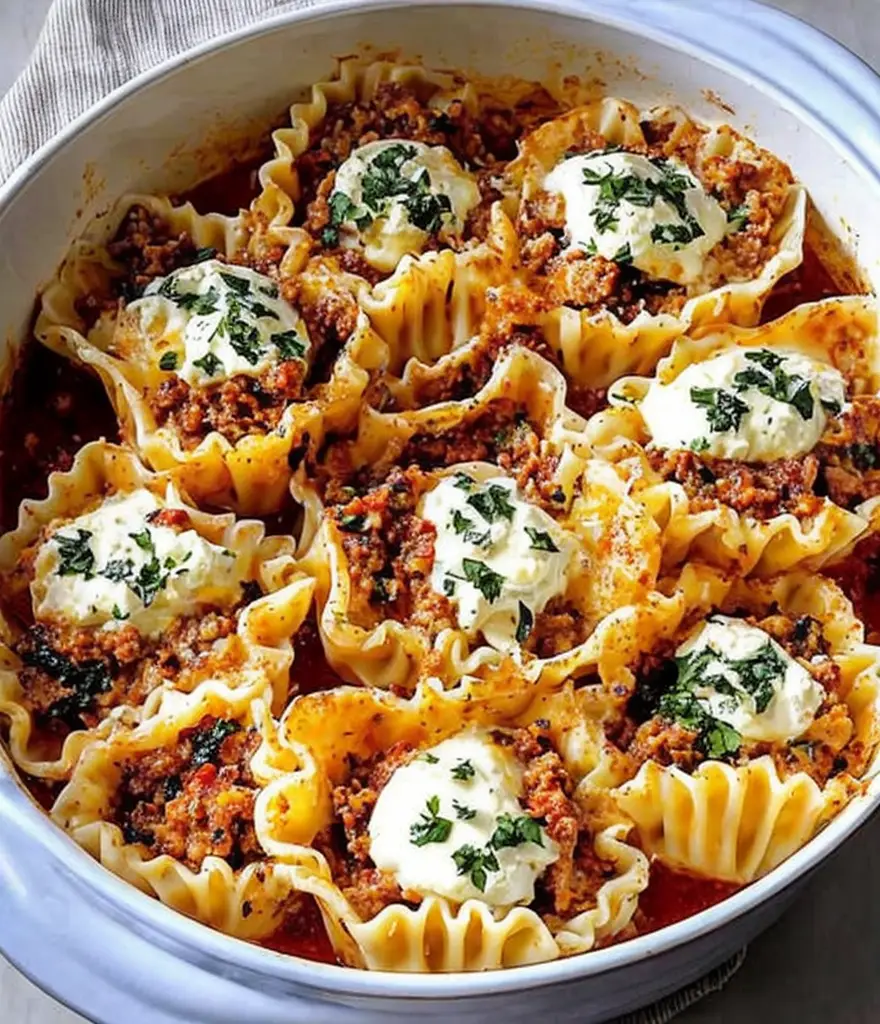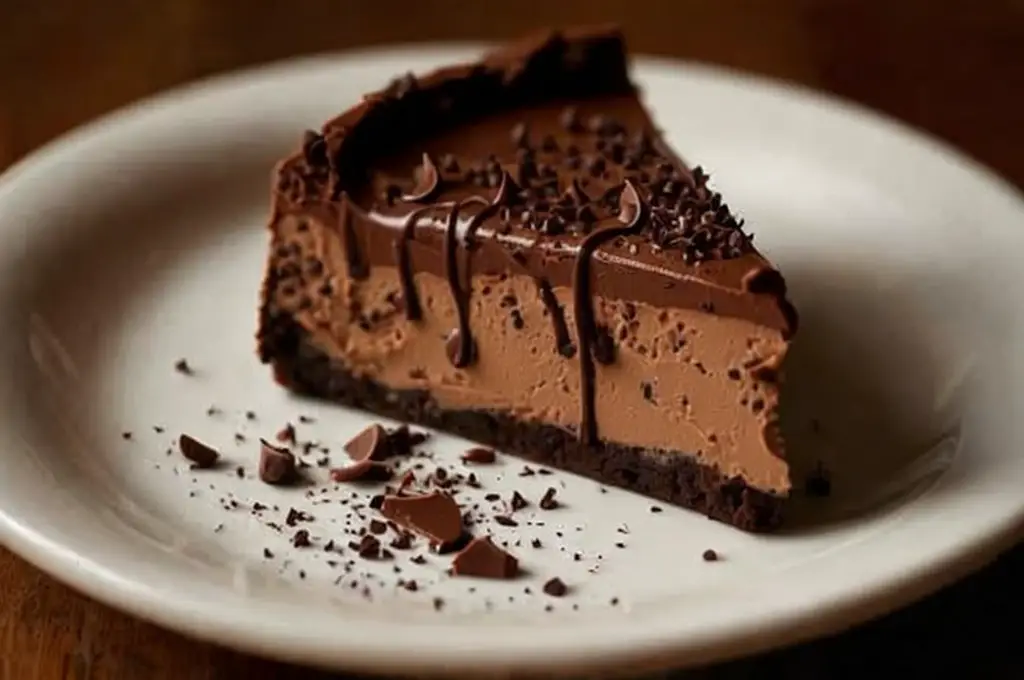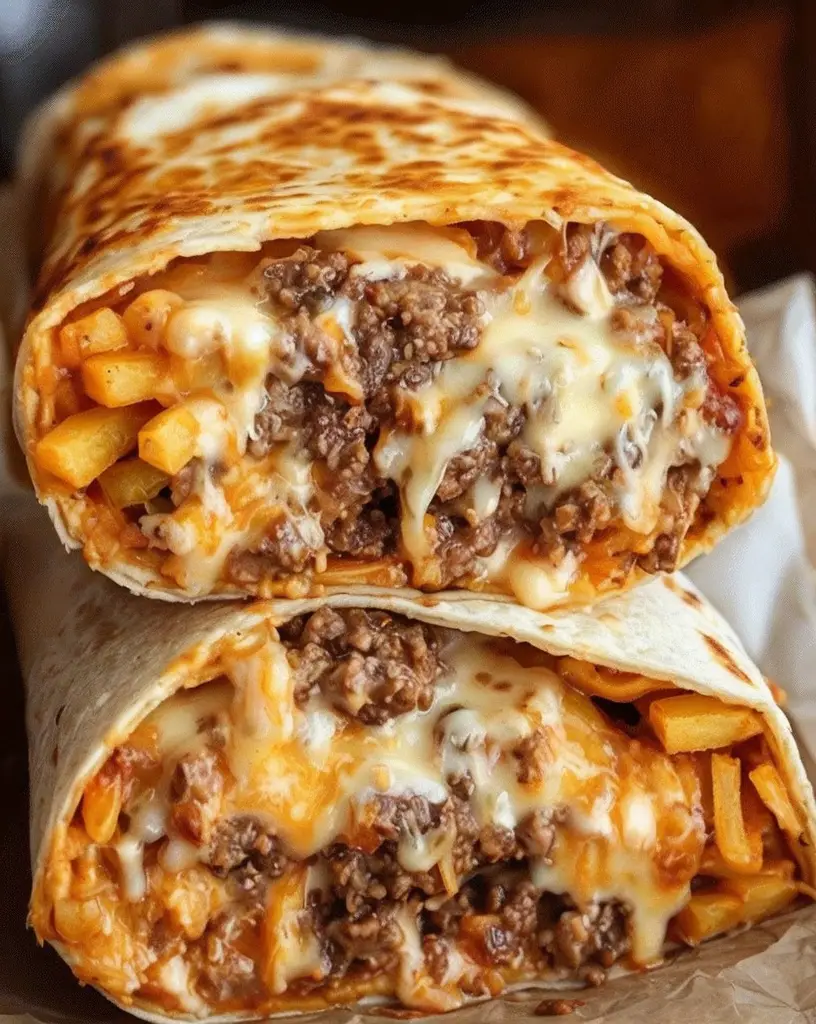Beef-Stuffed Pasta Shells with Creamy Ricotta Filling: A Comfort Food Delight
Indulge in the delicious layers of flavor found in these Beef-Stuffed Pasta Shells with Creamy Ricotta Filling. This recipe brings a comforting taste of home straight to your dinner table, blending rich beef with creamy ricotta and savory spices. Each shell is generously stuffed and baked to perfection, enveloped in a rich tomato sauce that ties all the flavors together. It’s a meal that’s sure to satisfy both your stomach and your soul.
This dish is not only rich in flavor but also visually stunning with its vibrant colors and beautifully presented shells. The satisfying crunch of the cheese melted on top combined with the tender pasta creates a delightful mouthfeel that you will crave again and again. Perfect for family gatherings or cozy dinners, these pasta shells stand out as a cherished classic that everyone will love.
Quick Recipe Highlights
- Flavor Profile: A meeting of rich beef, a creamy ricotta filling, and tangy tomato sauce creates a balanced, hearty flavor.
- Texture: A delightful contrast of soft pasta shells, creamy filling, and crispy, melted cheese create a satisfying experience.
- Aroma: The aroma of garlic and herbs mingling with the hearty beef makes this dish irresistible as it bakes.
- Visual Appeal: Each serving of beautifully arranged stuffed shells topped with melted cheese is a feast for the eyes.
- Skill Level Needed: This medium-level dish requires basic cooking skills but is manageable for home cooks willing to learn.
- Special Equipment: Basic kitchen tools like a large pot, baking dish, and mixing bowl are all you’ll need.
Recipe Overview
- Difficulty Level: This recipe is categorized as medium difficulty, making it accessible for most home cooks. While some techniques, like stuffing pasta shells, require patience, the overall process is straightforward.
- Category: Beef-Stuffed Pasta Shells can be categorized as a main course, perfect for comforting family meals and satisfying hungry appetites.
- Cuisine: This dish is rooted in Italian cuisine, showcasing classic ingredients like pasta, ricotta, and beef, highlighting the country’s traditional flavors.
- Cost: With everyday ingredients, this recipe is affordable, costing around $15 for a meal that serves 4-6 people.
- Season: Beef-Stuffed Pasta Shells are great year-round; however, they are particularly comforting during the colder months as a warming meal.
- Occasion: Serve these shells for family dinners, potlucks, or any gathering where comfort food is welcomed.
Why You’ll Love This Recipe
Taste and texture appeal: The rich, savory taste of browned beef blends seamlessly with the creamy ricotta in every bite. Such harmony of flavors is augmented by the slight sweetness of the marinara sauce, making these shells an absolute delight. The experience is a perfect blend of hearty and comforting that many will find enchanting.
Convenience and preparation benefits: These stuffed pasta shells are a one-dish meal that can be prepared ahead of time, allowing for a stress-free cooking experience. Plus, clean-up is a breeze, as most of the cooking happens in one baking dish.
Nutritional advantages: Packed with high protein from the beef and calcium from the ricotta, this recipe provides essential nutrients that contribute to a balanced meal. When paired with a side salad, it creates a wholesome dining experience full of vitamins.
Social and entertaining value: This is a dish that easily feeds a crowd, making it ideal for entertaining guests or family. The fun of serving personalized portions allows for a casual yet satisfying dinner atmosphere.
Cost-effectiveness and accessibility: Using simple ingredients that are often found in your pantry, this recipe is budget-friendly. It’s a fantastic way to get the best value while enjoying a delicious homecooked meal.
Historical Background and Cultural Significance
The origins of stuffed pasta date back centuries, with its roots firmly planted in Italian culinary tradition. Pasta was first created as a simple staple food and slowly evolved into various forms, with stuffed versions emerging as a gourmet touch to traditional meals.
Culturally, stuffed pasta symbolizes abundance and family gatherings, representing a meal meant to share and enjoy together. These types of dishes are often served at communal events or holidays, reinforcing their place in traditional Italian family culture.
Over time, the recipe for stuffed pasta has evolved significantly; from simple fillings to elaborate combinations of meats, vegetables, and cheeses to suit different tastes and preferences. With globalization, many influences have been incorporated, though traditionally Italian flavors remain dominant.
Regional variations abound, with different areas of Italy showcasing their unique takes on stuffed pasta. For instance, in Naples, one might find them filled with seafood, while in Bologna, many prefer a ragu-style filling. This diverse interpretation showcases the flexibility and creativity inherent in Italian cuisine.
Ingredient Deep Dive
Pasta Shells: A staple in Italian cooking, pasta shells are versatile and hold fillings beautifully. When selecting, look for larger shells that are sturdy enough to hold the filling without breaking. Store in a cool, dry place, and for substitutions, consider using large tubes of cannelloni.
Ground Beef: A common protein in many cuisines, ground beef is packed with flavor and easy to work with. Choose lean beef to keep the dish healthier. Store in the fridge and use within a few days or freeze for longer storage. Can be substituted with turkey or plant-based options for a lighter alternative.
Ricotta Cheese: A creamy cheese essential for stuffed pasta, ricotta has its roots in Italian cuisine, especially in desserts. It’s rich in calcium and has a distinct sweetness. Always select fresh ricotta, and for storage, it should be refrigerated. Substitute with cottage cheese or even a vegan alternative for dietary needs.
Marinara Sauce: Essential for the dish’s base, marinara is a classic Italian tomato sauce that adds flavor and moisture. Homemade is ideal, but store-bought can save time. Always select sauces with no added sugars for the healthiest option. For a twist, use pesto or Alfredo sauce instead.
Common Mistakes to Avoid
- Overcooking the pasta shells can lead to mushiness. Ensure they are al dente before stuffing.
- Using too much filling may cause the shells to burst during baking. Fill them generously but do not overstuff.
- Not seasoning the ricotta mixture can yield bland results. A pinch of salt and other spices enhance the dish’s flavor.
- Skipping the sauce on the bottom of the baking dish leads to a dry pasta experience. Always provide a layer of sauce for moisture.
- Baking at too high a temperature may cause the cheese to burn. Follow the suggested temperature to ensure cheese melts perfectly.
- Using pre-shredded cheese can result in a drier texture. Freshly grated cheese melts better and adds flavor.
- Not letting the dish rest after baking can make serving difficult. A short resting period helps set the fillings.
- Neglecting to cover the baking dish with foil while baking can lead to over-browning. Covering keeps the moisture in.
- Choosing the wrong type of beef can affect flavor. Ground chuck provides the best richness.
- Not adjusting cooking time based on your oven can lead to unevenly cooked shells. Familiarize yourself with your oven’s quirks.
Essential Techniques
Mastering the art of pasta cooking is crucial. It’s vital to boil the pasta shells until they are just al dente, as they will continue to cook in the oven. Always add salt to the boiling water for flavor. The visual cue for readiness is when the pasta has a slight firmness to the bite.
Stuffing the shells correctly will take practice. Use a spoon or a piping bag to ensure even filling; a common pitfall is overstuffing. The best way to master this technique is to start with a small amount and adjust as you go. Look for a neat appearance without overflowing filling.
Pro Tips for Perfect Beef-Stuffed Pasta Shells
1. To elevate flavors, add a splash of red wine to the beef mixture while sautéing. This enhances depth and brings out richer flavors.
2. Incorporate fresh herbs such as basil or parsley into the ricotta for brightness and freshness.
3. Consider adding chopped spinach or other greens to the filling for extra nutrition and color.
4. Mix different cheeses in with the ricotta, such as mozzarella or Parmesan, for a delightful fusion of flavors.
5. Use homemade marinara sauce when possible to control the ingredients and enhance the overall taste.
6. For an exquisite finish, broil the pasta shells for the last 2-3 minutes of baking to achieve a golden, crispy top.
7. Prepare the filling a day in advance and let it rest in the fridge, allowing flavors to meld.
8. Serve with a sprinkle of fresh herbs or additional cheese for a beautiful presentation.
Variations and Adaptations
Regional variations abound for stuffed pasta; for instance, Neapolitan-style often includes seafood or vegetables in the filling rather than beef. Adjusting spices or flavor profiles allows for creative expressions suited to different tastes.
Seasonal adaptations work wonderfully; consider adding roasted butternut squash or mushrooms in fall for a delicious variation. Using seasonal ingredients can bring freshness and variety to this classic dish.
If dietary restrictions apply, a dairy-free ricotta made from cashews can replace traditional ricotta, making the recipe accessible to everyone.
In terms of flavor variations, experiment with different sauces like Alfredo for a rich experience or pesto for a herby twist, altering the taste profile significantly.
Texture modifications, such as adding breadcrumbs to the beef mixture, can provide a delightful crunch that contrasts the creamy filling. Adjusting cooking times to enhance texture can also be beneficial.
For presentation alternatives, consider placing the stuffed shells in a baking dish, topping them with cheese, then drizzling with balsamic reduction for an elegant finish.
Serving and Presentation Guide
Plating your beef-stuffed pasta shells beautifully enhances the dining experience. Start by placing the shells on a bed of marinara sauce and top them with a sprinkle of freshly grated cheese. A sprig of basil can add a touch of color and freshness.
Garnishing ideas include a drizzle of olive oil or a light dusting of crushed red pepper for those who enjoy spice. Serving with a side of garlic bread provides a wonderful combination that completes the meal.
Traditionally, stuffed pasta is served warm, but for a modern twist, consider serving it at room temperature during gatherings, which allows guests to enjoy the flavors without feeling rushed.
Temperature considerations are essential; serve the pasta shells straight from the oven for maximum meltiness in the cheese, and ensure they rest for a few minutes before slicing to keep the filling intact.
Portion control tips recommend serving two to three shells per person, depending on the size and appetite. This allows everyone to fully enjoy the meal without waste.
Wine and Beverage Pairing
To complement your Beef-Stuffed Pasta Shells, a glass of Chianti or a smooth red blend is a fantastic choice. Both wines enhance the rich beef flavors while providing a pleasant contrast to the creamy ricotta.
For those seeking non-alcoholic options, a sparkling water with lemon or a fresh herbal iced tea can serve as refreshing accompaniments to balance out the richness of the dish.
If coffee or tea is more suitable for your gathering, consider a cappuccino, as its frothy milk mirrors the dish’s creamy texture. When choosing beverages, keep in mind that moderately warm drinks pair well with warm pasta dishes.
Storage and Shelf Life
To store leftovers, keep them in an airtight container in the refrigerator for up to 3 days. This allows the flavors to meld further, creating an even tastier reheated meal.
Ensure the pasta shells have cooled completely before storing to prevent condensation and resultant sogginess. For prolonged storage, consider freezing the assembled, unbaked dish for up to three months—just be sure to thaw before baking.
Signs of spoilage include an off-smell or any discoloration. Always check food quality before reheating, as spoiled ingredients can affect the meal’s safety.
Reheating instructions recommend using the oven when possible for the best texture. Bake at 350°F until heated through, usually taking about 20-30 minutes.
Make Ahead Strategies
For busy days, prepare the beef mixture a day in advance, storing it in the refrigerator to allow flavors to deepen. Assemble the stuffed shells just before you’re ready to bake, making for a quick, convenient dinner option.
Between steps, store any unused components separately—such as leftover filling or sauce, which can extend the life of each ingredient while maintaining freshness.
Quality impact assessment shows that, while prepped ingredients can save time, freshness is critical for flavor and texture. Always prioritize fresh ingredients, particularly for the pasta and herbs.
When assembling, ensure your pasta shells are filled just before baking to avoid sogginess. A quick reheat may be necessary for the filling if it’s been sitting out for a while.
Incorporate fresh basil or other greens just before serving for added brightness and flavor contrast, making your dish pop with color.
Scaling Instructions
To halve the recipe, simply adjust the ingredient amounts accordingly. Use smaller baking dishes for smaller yields, which can help maintain moisture and flavor intensity.
Doubling or tripling the recipe is feasible when cooking for larger crowds—just ensure you have an adequately sized baking dish and plan for extended baking times if necessary.
Equipment adjustments should involve larger pots for boiling the pasta and potentially bigger mixing bowls for your fillings and sauces.
Timing modifications may be necessary when increasing the yield, as larger batches can take longer to cook through evenly. Monitor the baking time closely.
When storing scaled versions, ensure each portion is packaged appropriately to maintain quality. Labeling containers with dates can help keep track of freshness.
Nutritional Deep Dive
This recipe provides an impressive macro breakdown with substantial protein from the beef and ricotta cheese. Depending on serving size, it offers a good balance of carbohydrates from the pasta alongside healthy fats.
Micronutrient analysis reveals a hearty dose of calcium and iron, along with vitamins provided by the tomato sauce and any added vegetables—important considerations for balanced diets.
Health benefits include the satiating effect of protein-rich foods, which can help maintain energy levels throughout the day. This dish promotes a feeling of fullness while being nutrient-dense.
Dietary considerations should always take into account individual needs, adjusting ingredients where necessary, and being mindful of portion sizes for weight management.
Portion analysis suggests serving two to three shells to balance enjoyment and healthfulness, providing adequate calories without overindulging.
Dietary Adaptations
For gluten-free needs, using gluten-free pasta shells is easily available on the market. This allows everyone to enjoy this delightful dish without compromising dietary restrictions.
Dairy-free alternatives can replace ricotta with cashew or tofu-based fillings. This ensures those with lactose intolerance still experience the creaminess everyone loves.
Vegan modifications require replacing beef with a plant-based protein and ensuring that all other fillings are plant-derived. With creative substitutions, this dish can be enjoyed by a wide range of diets.
Low-carb adaptations may use zucchini boats or eggplant instead of pasta, maintaining that delicious beef filling while significantly reducing carbohydrate content.
Keto and Paleo followers can adapt fillings accordingly using nuts and seeds mixed with herbs for a flavor profile that stays true to tradition without losing diet compliance.
Low-FODMAP variations focus on low-sugar ingredients, substituting garlic in the sauce and avoiding certain high-FODMAP vegetables in the filling.
Other specific diets can tailor the ingredients further, ensuring healthy choices are honored while keeping in mind individual taste preferences and dietary needs.
Troubleshooting Guide
If you experience texture issues such as overly mushy pasta, ensure to not overcook the shells before stuffing. Always aim for al dente as a base for the best integrity.
Flavor balance can be a common concern. Ensure to adjust seasoning as you go, tasting both the beef mixture and the sauce to ensure a vibrant flavor in each bite.
Temperature problems arise when baking. Be aware of your oven’s actual temperature as variations can impact the baking outcome, possibly requiring longer or shorter cooking times.
Equipment challenges, such as the pasta sticking together, can be alleviated by ensuring the water is salted adequately and that pasta is stirred during cooking times.
Ingredient substitutions may change the outcome; always test combinations beforehand to ensure they produce a result that meets your expectations.
Timing concerns often come into play when scaling recipes. It’s crucial to adjust both cooking and prep times according to the amount being prepared to avoid undercooking or overcooking.
Recipe Success Stories
Community feedback on this recipe highlights its versatility and reliability as a go-to family meal. Many have enjoyed the satisfaction of serving these stuffed shells as a weekly dinner staple.
Variation successes have been noted—readers report success when substituting vegetables or trying different meat options, showcasing the dish’s adaptability to preferences.
Adaptation stories often reflect personal preferences, with individuals sharing how they have infused custom spices or additional ingredients into the filling, making it uniquely their own.
Readers encourage others to experiment with presentation ideas, showing pictures of beautifully arranged stuffed shells topped with fresh herbs or additional cheese for a gorgeous finish.
Frequently Asked Questions
Can I make Beef-Stuffed Pasta Shells ahead of time?
Absolutely! You can prepare the shells ahead of time and store them in the fridge or freezer before baking. Just be sure to adjust cooking time accordingly.
What can I use instead of ricotta cheese?
Cottage cheese is a great substitute for ricotta, or for a dairy-free option, try a cashew cream or tofu-based ricotta.
How do I prevent the pasta from sticking together?
Ensure to stir the pasta occasionally while boiling and rinse with cold water after cooking, which can help prevent sticking.
Can I freeze leftovers?
Yes, you can freeze leftovers for up to three months. Just package them in airtight containers to avoid freezer burn.
What type of ground beef should I use?
Lean ground beef is most commonly used, but ground turkey or chicken can also provide a lighter option.
How do I reheat stuffed shells?
Reheat the stuffed shells in the oven at 350°F for about 20-30 minutes, or until heated through. Cover with foil to retain moisture.
Can I use a different type of sauce?
Absolutely! While marinara is traditional, feel free to use Alfredo, pesto, or even a homemade cheese sauce for a unique twist.
What other fillings can I use?
Consider using a mix of vegetables, different cheeses, or even seafood to vary the flavor and texture.
How do I making these shells vegetarian?
Replace the beef with a variety of vegetables, such as spinach, mushrooms, or zucchini for a hearty vegetarian option.
What are good side dishes to serve with stuffed shells?
Pair the stuffed shells with a side salad, garlic bread, or some roasted vegetables for a complete meal.
Additional Resources
For more delicious recipes, check out our collection of pasta dishes that will satisfy your cravings for Italian cuisine. Explore technique guides focused on perfecting your pasta-making skills. Ingredient information can help you understand what to look for when shopping for quality items to elevate your dishes. Don’t forget to check out our equipment recommendations to find the best tools to help in your cooking adventures!
Join the Conversation
We’d love to hear your thoughts on this recipe! Share your cooking experiences on social media or leave a comment below. We encourage you to share your own variations and adaptations. Don’t forget to upload your photos—we enjoy seeing how you present your Beef-Stuffed Pasta Shells!
The Recipe
Beef-Stuffed Pasta Shells with Creamy Ricotta Filling
Serves: 4-6
Prep Time: 30 mins
Cook Time: 45 mins
Total Time: 75 mins
Kitchen Equipment Needed
- Large pot for boiling pasta
- Baking dish
- Mixing bowl
- Spoon or piping bag for stuffing shells
- Oven
Ingredients
- 20-25 jumbo pasta shells
- 1 pound ground beef
- 15 oz ricotta cheese
- 2 cups marinara sauce
- 1 cup shredded mozzarella cheese
- 1/2 cup grated Parmesan cheese
- 1 egg
- 2 cloves garlic, minced
- 2 tablespoons chopped fresh basil
- Salt and pepper to taste
Directions
- Preheat your oven to 375°F (190°C).
- Cook the jumbo pasta shells according to package instructions until al dente. Drain and set aside.
- In a large skillet over medium heat, cook the ground beef until browned. Drain excess fat and add garlic; sauté for an additional minute.
- In a mixing bowl, combine cooked beef, ricotta cheese, egg, basil, salt, and pepper.
- Spread a thin layer of marinara sauce on the bottom of a baking dish.
- Stuff each pasta shell with the beef mixture and place them in the baking dish. Top with remaining marinara sauce and sprinkle with mozzarella and Parmesan cheese.
- Cover the baking dish with aluminum foil and bake for 25 minutes. Remove the foil and bake for an additional 15-20 minutes or until the cheese is bubbly and golden.
- Let cool for a few minutes before serving. Enjoy!
Recipe Notes
- Feel free to make ahead and freeze before baking.
- For a spicier flavor, add red pepper flakes to the ground beef mixture.
- Substitutions can be made for ground turkey or meat alternatives for a lighter version.




